About Civil Defence Shelters
This is a short history of civil defence shelters in Singapore:
- 1983: The construction of the first public shelters started by hardening nine underground MRT stations on the North-South and East-West Lines.
- 1987: A comprehensive shelter programme began with public shelters at void deck of new HDB residential blocks. Since then, public shelters have also been built in secondary schools, community centres and other public buildings.
- 1994: It was announced that Household Shelters would be built inside new HDB flats. This enables residents to have quick access to protection in a war or an emergency. Therefore, the practice of building public shelters at the
void deck of HDB blocks was discontinued. However, the programme to incorporate public shelters in secondary schools, community centres and other public buildings continued.
- 1997: Under the Civil Defence Shelter Act 1997, new houses and flats must have household / storey shelters incorporated into the development. Applications for planning permission for new flats or houses to Urban Redevelopment Authority (URA) must therefore include household or storey shelters.
Procedures for Shelter Occupation
- Before the start of a wartime emergency, SCDF will increase public education programmes to prepare you to take precautionary and protective measures.
- You should prepare your shelter for occupation.
- When the "Alarm" signal from the Public Warning System (PWS) is sounded, you need to move into the nearest shelter.
- In the shelter, you should tune in to local TV or radio channels for important messages. This can be done via mobile devices using WIFI / mobile networks or portable radios.
- Once the "All Clear" signal is sounded, you can leave the shelter and resume your daily routine.
CD Shelter Sign
To identify a CD Public Shelter, look out for the CD shelter sign. You will see it near or at the places where the shelters are located.
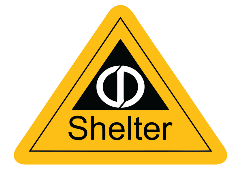
Locate your nearest CD Public Shelter
Click on the link for the List of Civil Defence Public Shelters (PDF, 279 KB)
Click on this link to locate your nearest CD Public Shelter on OneMap. Please follow these steps to view the CD Public Shelters on OneMap:
| Steps | Screenshot |
| 1) Click on "Menu" tab; | 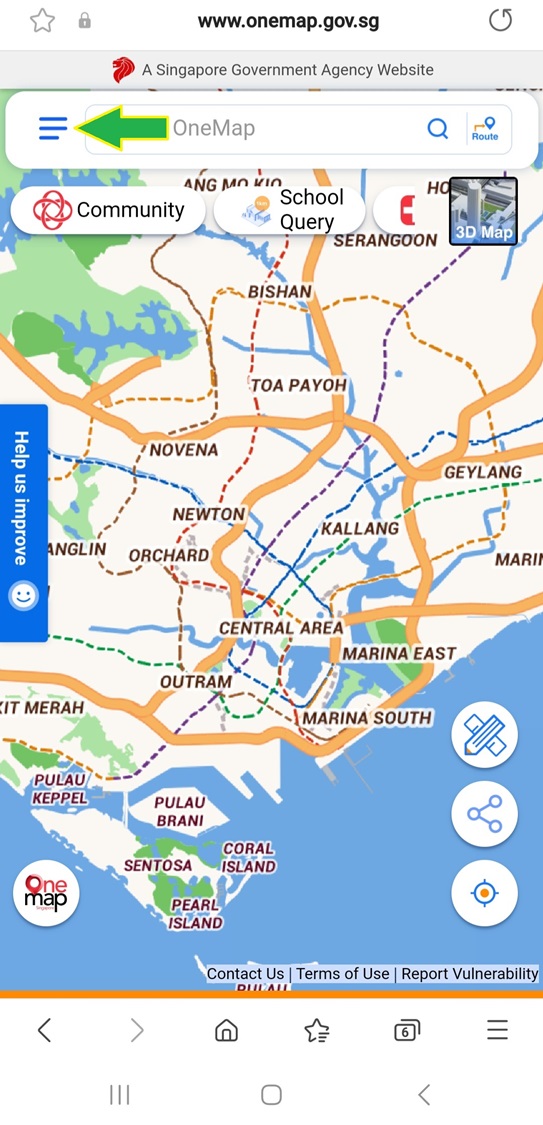 |
| 2) Click on the "Nearby" category; | 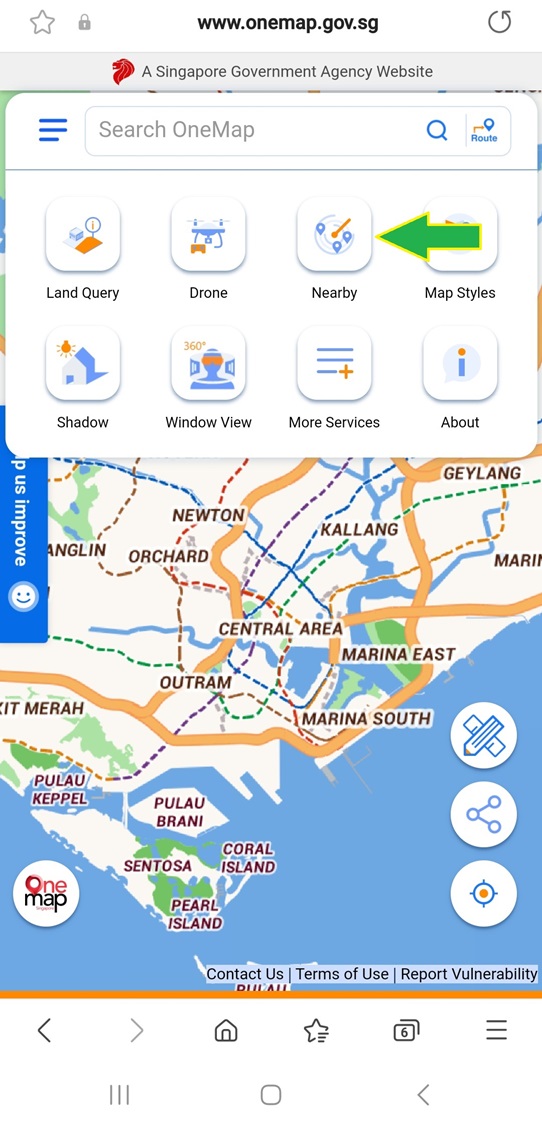 |
| 3) Click on “Safety and Security” category; | 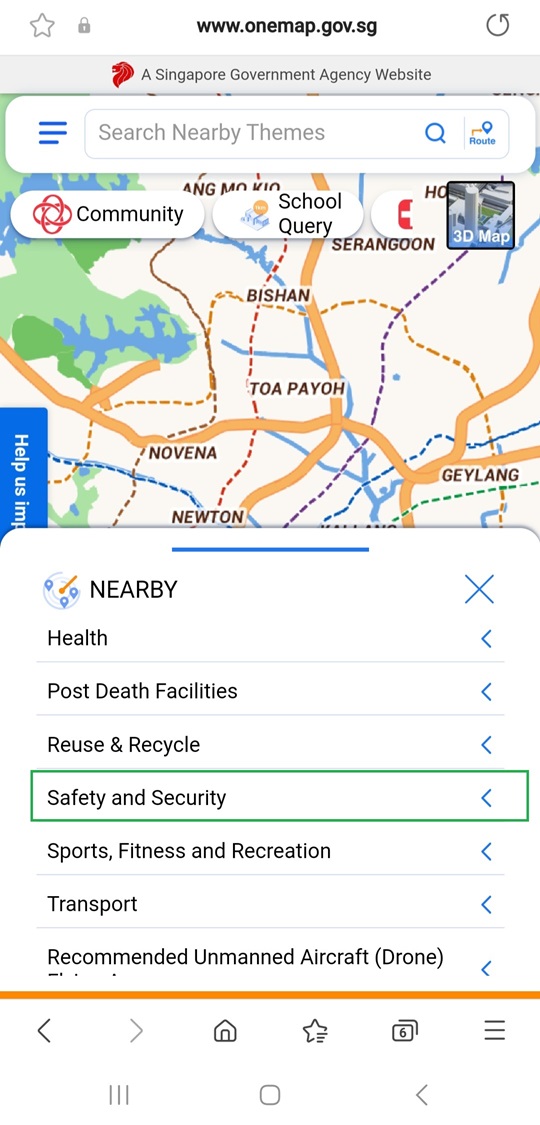 |
| 4) Click on “Civil Defence Public Shelters”; | 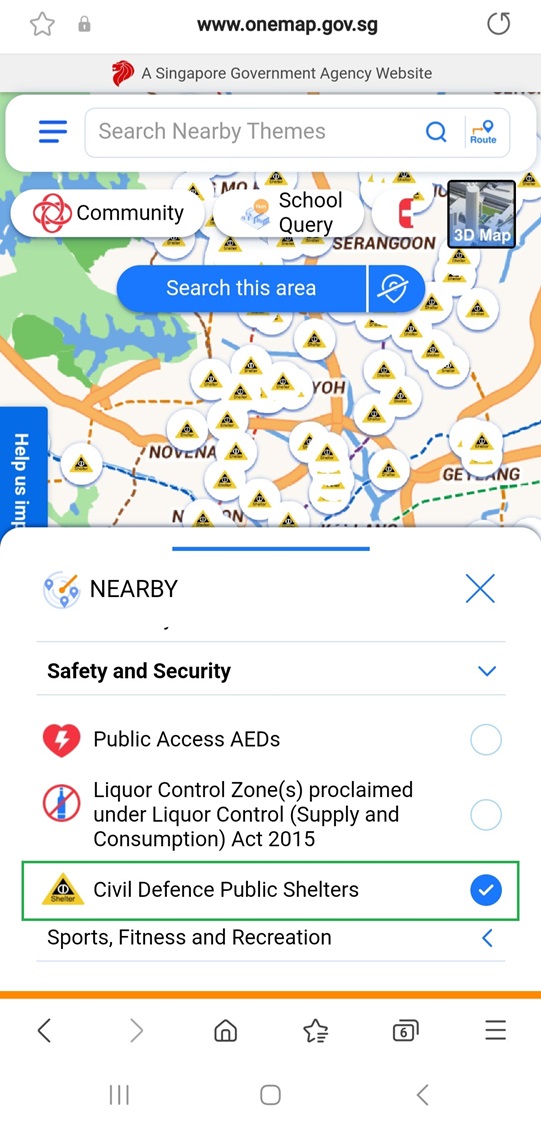 |
| 5) Swipe "Menu" tab down to view map. | 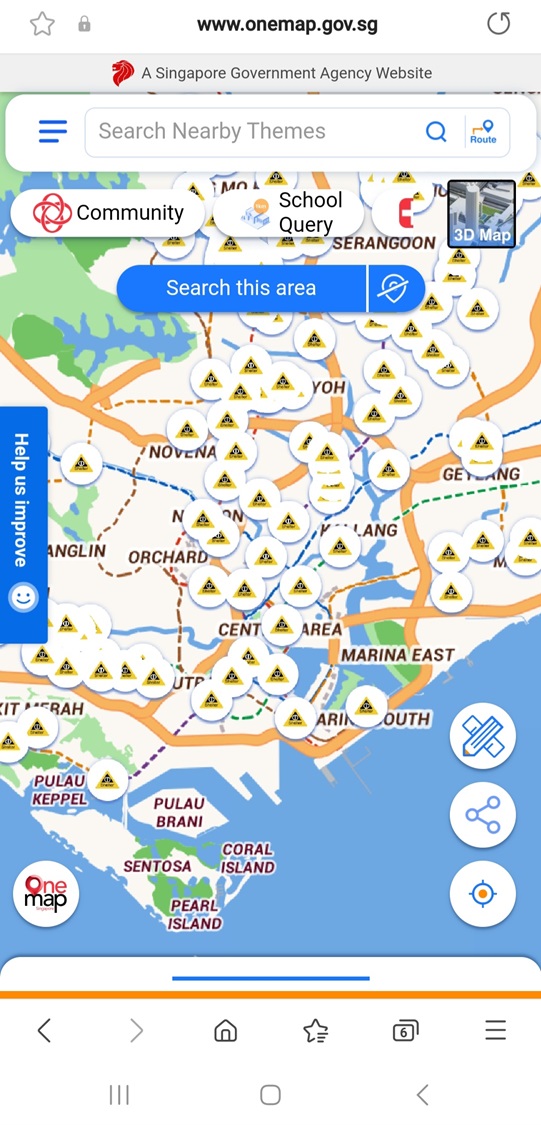 |
